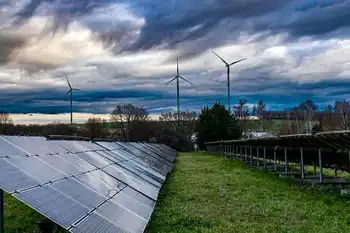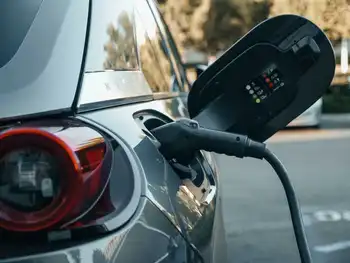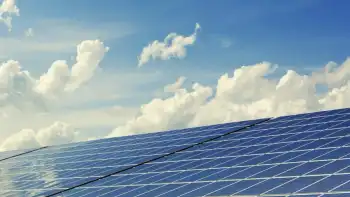Factory Set to Elevate the United States in the Clean Energy Race

Protective Relay Training - Basic
Our customized live online or in‑person group training can be delivered to your staff at your location.

- Live Online
- 12 hours Instructor-led
- Group Training Available
Maxeon IBC Solar Factory USA will scale clean energy with high-efficiency interdigitated back contact panels, DOE-backed manufacturing in Albuquerque, utility-scale supply, domestic production, 3 GW capacity, reduced imports, carbon-free electricity leadership.
Key Points
DOE-backed Albuquerque plant making high-efficiency IBC panels, 3 GW yearly, for utility-scale, domestic solar supply.
✅ 3 GW annual capacity; up to 8 million panels produced
✅ IBC cell efficiency up to 24.7% for utility-scale projects
✅ Reduces U.S. reliance on imported panels via domestic manufacturing
Solar energy stands as a formidable source of carbon-free electricity, with the No. 3 renewable source in the U.S. offering a clean alternative to traditional power generation methods reliant on polluting fuels. Advancements in solar technology continue to emerge, with a U.S.-based company poised to spearhead progress from a cutting-edge factory in New Mexico.
Maxeon, initially hailing from Silicon Valley in the 1980s, recently ventured into independence after separating from its parent company, SunPower, in 2020. Over the past few years, Maxeon has been manufacturing solar panels in Mexico, Malaysia, and the Philippines, as record U.S. panel shipments underscored rising demand.
Now, with backing from the U.S. Department of Energy's Loans Programs Office, Maxeon is preparing to commence construction on a new facility in Albuquerque in 2024, amid unprecedented growth in solar and storage nationwide. This state-of-the-art factory aims to produce up to 8 million panels annually, featuring the company's interdigitated back contact (IBC) technology, which has the capacity to generate three gigawatts of power each year. Notably, the entire U.S. solar industry completed five gigawatts of panels in 2022, making Maxeon's endeavor particularly ambitious and aligned with Biden's proposed tenfold increase in solar power goals.
Maxeon's presence in the United States holds the potential to reduce the country's reliance on imported panels, particularly from China. The primary focus will be on providing this advanced technology for utility departments, where pairing with increasingly affordable batteries can enhance grid reliability while shifting away from residential and commercial rooftops.
Maxeon has achieved a remarkable milestone in solar efficiency, with its latest IBC technology boasting an efficiency rating of 24.7%, as reported by PV Magazine.
This strategic move to the United States could be a game-changer, not only for Maxeon's success but also for clean power generation in a nation that has traditionally depended on external sources for its supply of solar panels, as energy-hungry Europe turns to U.S. solar equipment makers for solutions. Matt Dawson, Maxeon's Chief Technology Officer, emphasized the importance of achieving the lowest levelized cost of electricity with the lowest overall capital, a feat that China has accomplished in recent years due to the strength of its supply chain. As energy independence becomes a global concern, solar manufacturing is poised to expand beyond China, with Southeast Asia already showing signs of growth, and now the United States and possibly Europe, including Germany's solar boost during the energy crisis, following suit.











